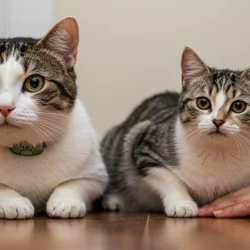How Can You Help Your Dog and Cat Become Friends?
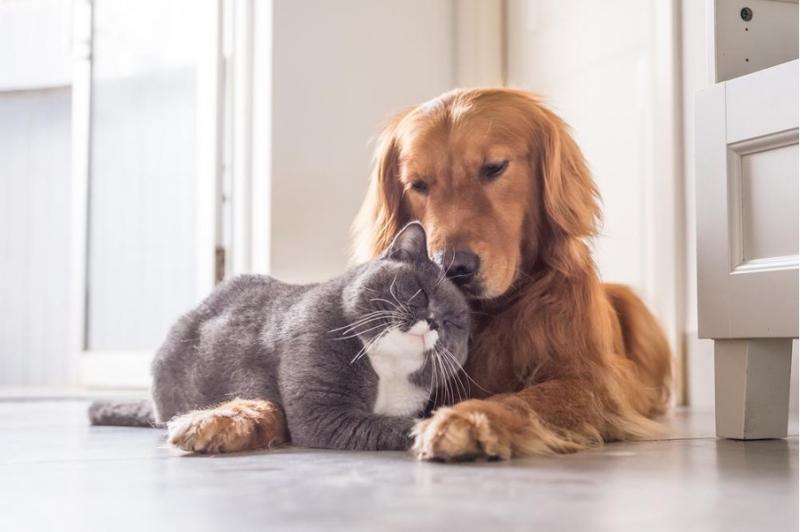
Always had a cat and now you’ve brought home a dog or vice versa? And, you’re wondering how you can help your dog and cat become friends?
Both species are known to be at each other’s throats most of the time. And, that’s not surprising either because a cat sees a dog as a threat, while a dog usually views a cat as a rival for its owner’s attention.
But through all the growls, snarls, hisses, and yaps, your tabby and tyke can be trained to live peacefully together and develop a tolerance for each other even if they never become the best of friends.
Here are practical tips on how to introduce a cat to a dog and how to get a cat and dog to bond.
Can Cats and Dogs Become Friends?
Have you googled “How to know if a dog and cat will get along?” You probably got mixed results.
It can be hard to predict how animals will react to each other. Your house cat may become curious about a new puppy. Your beloved dog may welcome a new kitten and treat it gently. On the other hand, it may take considerable time for the dog to accept a cat as a family member.
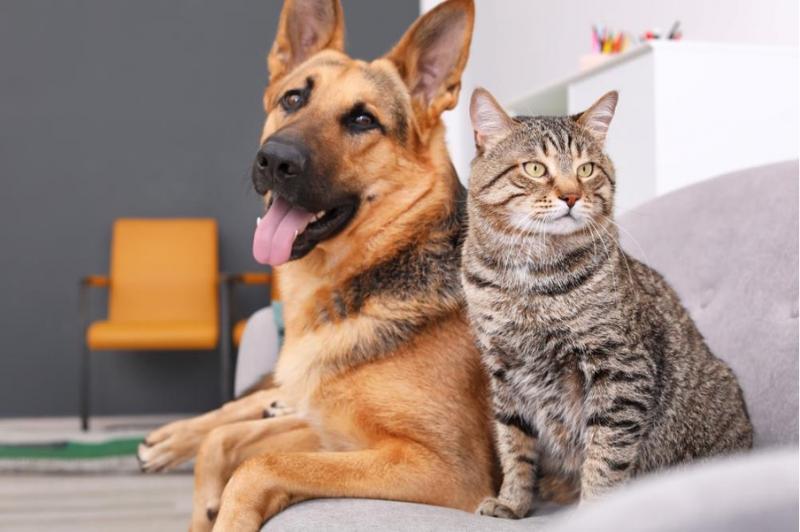
Tips to Help Your Dog and Cat Like Each Other

Enrol Them in Obedience Training
If questions like “how do I socialize my dog and cat” are on top of your mind, then the first step should be to invest in obedience training for your dog. A well-behaved dog that can control its impulses will get along better with a cat.
Your dog’s instinct to chase prey is quite strong, so you need to manage this as soon as possible. Otherwise, an untrained dog will end up pursuing your cat relentlessly.
If your cat fails to recognize this as a game, it will feel stressed whenever it sees your dog. Your cat might even decide to fight back, which can lead to both of them getting injured.
Make sure you teach your dog to heed commands like “Stop.” With the proper training, your pet dog will understand that it needs to leave your cat alone.
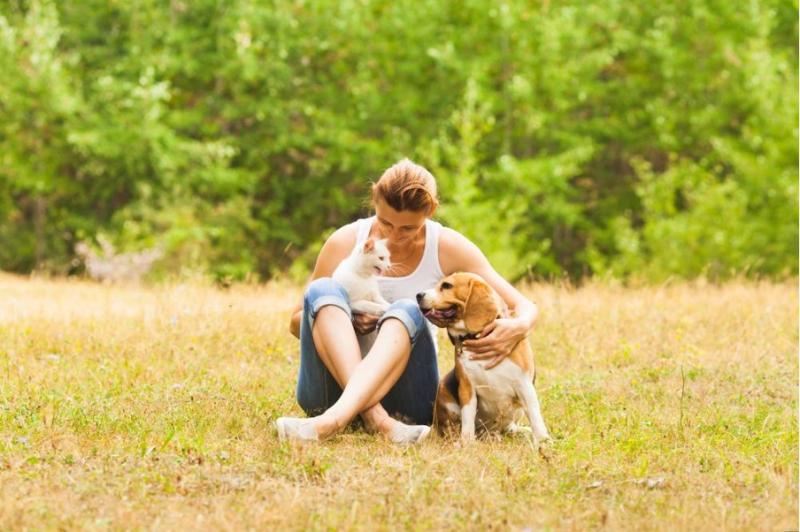
Let Them Interact in Your Presence
The initial interaction between your dog and cat should happen under your supervision. This is crucial in the first few weeks after you have introduced a new pet to your household. If left to their own devices, there are higher chances of a cat and a dog hurting each other.
Schedule a common playtime for your feline and canine pets. Both animals should be willing to play and in a good mood.
During the first couple of weeks, you can also try feeding your cat and dog at the same time. Since their focus will be on eating, they are less likely to get into a tussle.
Don’t expect instant rapport between a cat and a dog. If you observe any discomfort, frustration, or hostility, separate them and try again another day.
Be Patient
So how do you get a dog that hates cats to like them? As with any form of animal training or socialization, the secret is to give it time.
If you're lucky, your dog and your cat may become friends during their first meeting. However, this rarely happens. It’s going to take time for your dog to adapt to your cat and vice versa.
That’s why you’ll need tons of patience and perseverance. Brace yourself for a lot of snarling and hissing whenever your pets meet. As much as possible, don’t force them to stay together as this can be traumatic for both, not to forget stressful for you.
As a safety precaution, leash both animals during their initial encounters. Remove the restraints only if they become tolerant of each other.
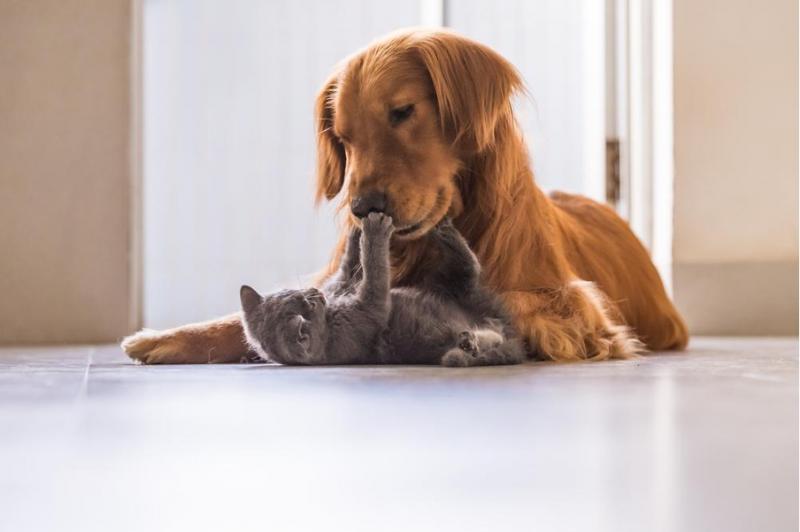
Desensitize Them
If you’re thinking, “How do I get my cat and dog to be friends,” here’s another tip. Desensitization allows your pets to get used to each other faster. The idea is to reduce your dog’s impulsive reaction to your cat’s presence.
Many dogs tend to get over-excited on seeing a cat for the first time. This can make your cat uneasy, thus spoiling the chances of a potential friendship.
So, what’s the best way to familiarize your dog with your cat’s presence?
Try using a baby gate. This low barrier separates your dog and cat while still allowing them to see or sniff each other through the bars.
With continuous exposure, your pets will soon become familiar with each other.
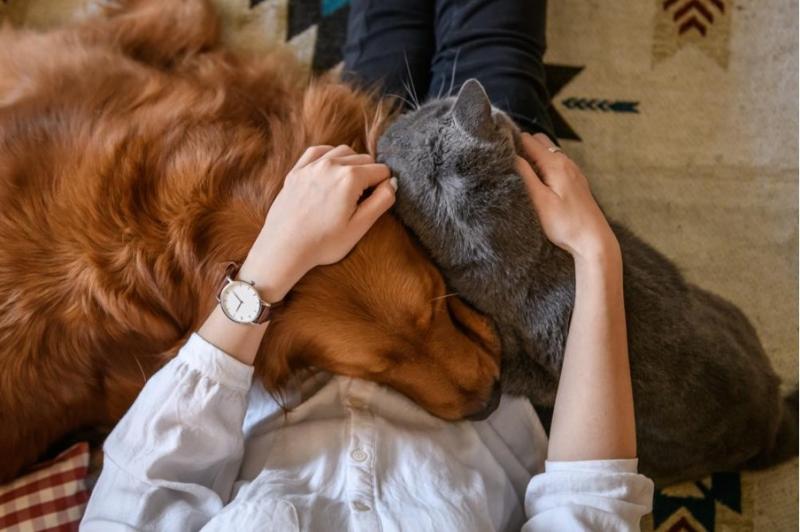
Give a Cat Its Territory Before It Meets Your Dog
As you learn how you can help your dog and cat become friends, pay close attention to the latter. Cats may feel cornered when they interact with loud, aggressive dogs. Since felines tend to be smaller, dogs often start treating them like prey.
To avoid this, ensure that your feline companion has its own territory, one that your dog cannot access. This “safe space” could be on top of the refrigerator or a bookshelf.
When you bring home a new pet, keep your existing pet in a separate room. Do this until the newcomer becomes safe and relaxed in its new home.

Keep Their Food and Toys Separate
Previously, we recommended feeding your dog and cat together in the first few weeks. But once they become familiar with each other, try keeping their feeding areas and utensils separate.
This way, you can prevent them from competing over food and also getting into each other’s food. While this can be difficult in a multi-pet household, it’s not impossible either.
Raised surfaces that your dog cannot access are ideal for feeding the kitty and you can move your dog’s meals to a closed-off area in the house.
This also applies to their treats and toys. Store your dog’s favorite chew toys away from your cat’s playthings.
How Long Does It Take for Cats and Dogs to Become Friends?
There is no exact answer to the question, “How long does it take for a dog and cat to get used to each other?” Some cats and dogs take to each other immediately. In other cases, it might take a few weeks or even months.
It also depends on the breed. Some dog breeds such as the beagle have friendly personalities and are known to get along with kids and other pets faster than the rest.
Don’t lose hope. With a bit of strategy and a lot of coaxing, your pets can become the best of pals and if not, at least get to a place where they can stand the sight of each other.
Final Thoughts
So how can you help your dog and cat become friends? By helping them overcome their instinctive need to protect themselves and their territory using the tips and tricks mentioned above. While there’s no guarantee that all of these methods will work, it definitely won’t hurt to try them out.
Keep in mind that this process takes time and close supervision. And oodles of patience and perseverance too! And in the meantime, remember, a little bit of sibling rivalry never did hurt anyone.
More to Read:
Previous Posts:
